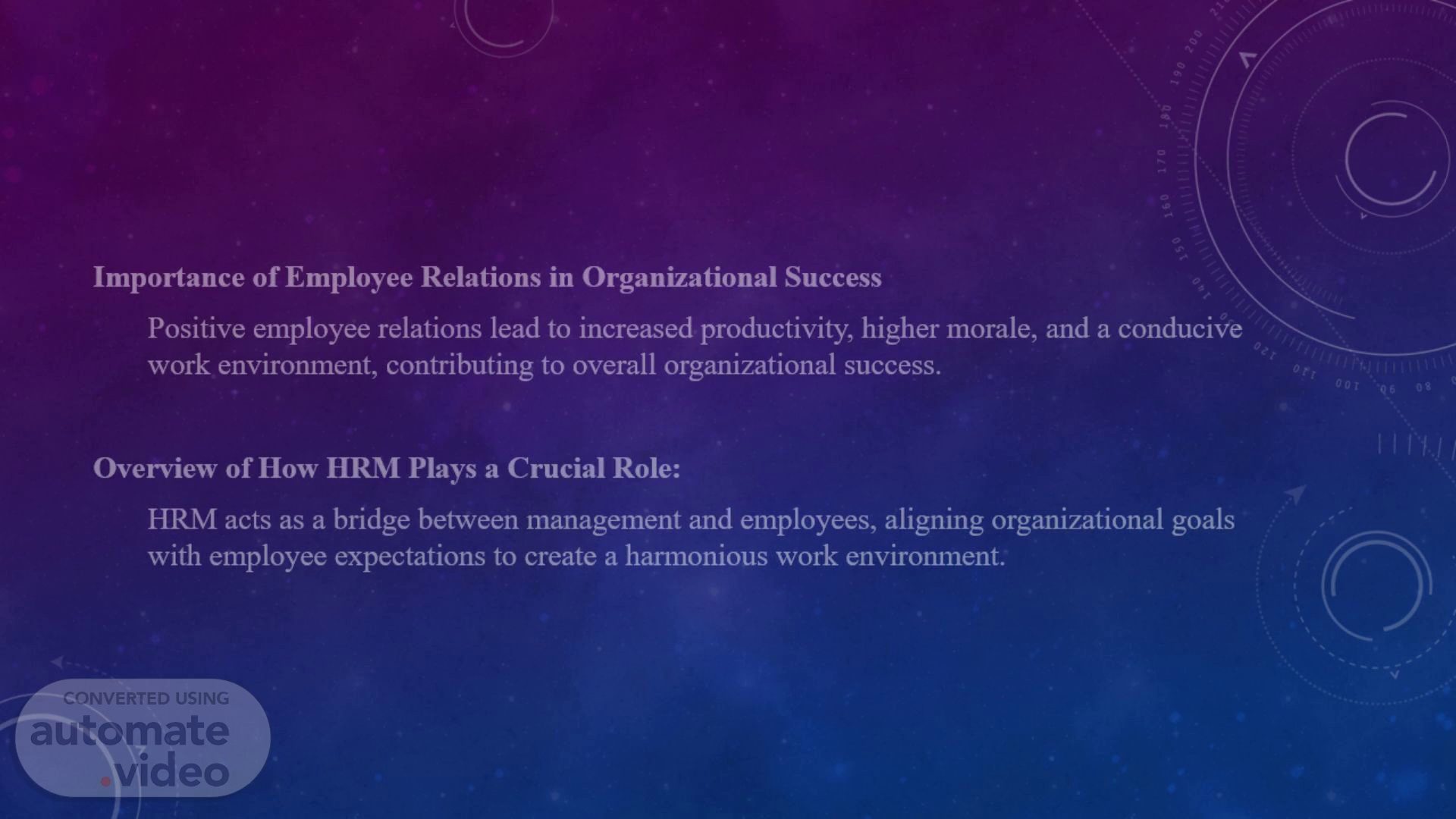
HRM and Employee Relations
Scene 1 (0s)
[Audio] Welcome to our presentation on the crucial role of Human Resource Management (HRM) in fostering positive employee relations. HRM, or Human Resource Management, is the strategic approach to managing an organization's most valuable asset—its people. Positive employee relations are essential for organizational success, contributing to increased productivity and a positive work environment. Let's explore how HRM plays a crucial role in achieving these goals..
Scene 2 (33s)
[Audio] In this slide, we delve into specific strategies employed by HRM to build and maintain positive employee relations. Transparent communication is key, fostering trust and understanding. HRM also plays a pivotal role in conflict resolution, ensuring fair and constructive outcomes. Employee engagement programs, like team-building activities and recognition events, contribute to a positive workplace culture. Additionally, HRM ensures the development and enforcement of fair and consistent policies, treating all employees equitably..
Scene 3 (1m 12s)
[Audio] Moving on to HRM practices, we'll explore how HRM influences various stages of the employee lifecycle. HRM is responsible for attracting and selecting talent, ensuring smooth onboarding processes, and providing opportunities for skill development through training and mentorship. Performance management, including regular feedback and goal-setting, is another critical aspect. Lastly, employee recognition programs contribute to a positive culture of appreciation within the organization..
Scene 4 (1m 47s)
[Audio] In this slide, we focus on how HRM measures and improves employee relations. Key Performance Indicators (KPIs) such as employee satisfaction scores, turnover rates, and absenteeism provide insights into the health of employee relations. HRM utilizes various feedback mechanisms, including surveys and performance reviews, to gather valuable insights. Taking a proactive approach, HRM continuously seeks improvement, adapting policies and programs to meet evolving employee needs. We'll conclude with real-world case studies showcasing successful HRM practices..
Scene 5 (2m 30s)
[Audio] To wrap up, we've explored the integral role of HRM in fostering positive employee relations. Key takeaways include the importance of effective communication, conflict resolution, and engagement programs. Fair policies, recruitment practices, and performance management enhance employee satisfaction and commitment. Continuous improvement is crucial, and positive employee relations directly impact organizational success. As we conclude, let's encourage organizations to prioritize HRM strategies for a resilient and thriving workplace culture. Thank you for your attention, and we're now open for any questions or discussions you may have..